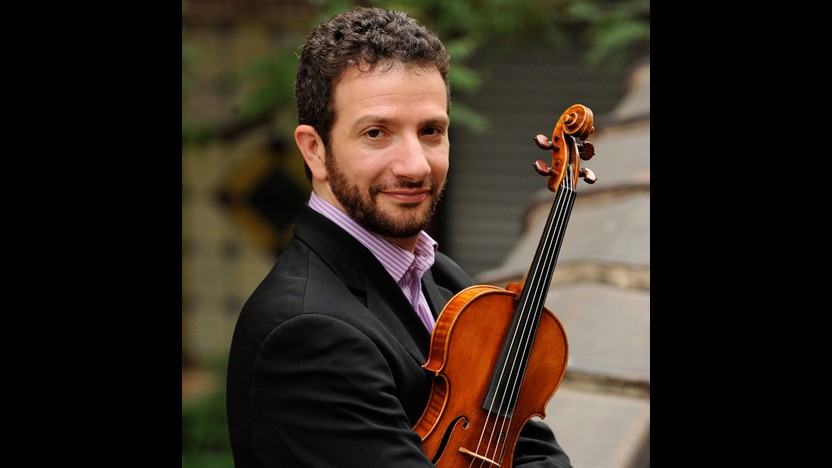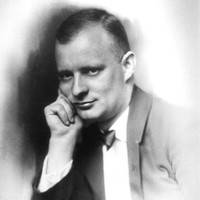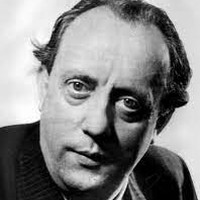Mozart's Jupiter Symphony

Sponsored By
- February 19, 2016


Sponsored By


One of the most important German musical figures of his generation, Paul Hindemith was likewise one of its most preternaturally gifted. In addition to his abilities as a composer, he was an accomplished violinist and violist (he premiered the Walton Viola Concerto), and even a proficient clarinetist. Compositionally, he was known for jaw-dropping creative facility: he could produce an airtight score as easily as writing a letter, as attested to by his large oeuvre, which is as varied as it is extensive.
Hindemith’s career falls into three periods. 1918–23 saw the composer’s eclectic youth, integrating a wide palette of influences: Brahms, Strauss, Debussy, Puccini, Schoenberg, Stravinsky, and jazz. In the wake of Germany’s cultural upheaval between 1923 and 1924—the failed aspirations of the Weimar Republic, subsequent inflation, crime, and poverty—a new artistic and sociopolitical trend emerged: the audacity of late Romanticism suddenly seemed inappropriate. Neue Sachlickhkeit—the “new objectivity”—valued the democratization of all elements of social experience; in music, the new objectivity represented an anti-Romantic approach to composition. It engendered the belief that music should be useful, practical, designed to bridge the divide between composer and audience, rather than serve merely as a vehicle for the composer’s self-expression. (Beethoven rolled over.) Much of Hindemith’s second period, occupying roughly the following decade, was given over to the composition of Gebrauchsmusik: “music for use,” expressly intended for social purposes, often playable by amateurs. This approach furthermore suggested a lyrical, tonal language. The weight of tonality likewise marked Hindemith’s third period, though his harmonic language remained unquestionably modern.
Hindemith composed his Kleine Kammermusik, Opus 24, No. 2, for wind quintet, in 1923, just as he entered into his second period. The work was published alongside his Kammermusic No. 1 for chamber orchestra—somewhat randomly, as the two scores hold neither instrumentation nor musical character in common. This incongruity is perhaps deliberate, to highlight the lighthearted humor of the jazz-tinged quintet.
Kleine Kammermusik begins with a wry march whose taut construction is matched by Hindemith’s deft handling of the five winds. The second movement is a waltz, but one much closer in character to Gershwin than Johann Strauss. The tongue-in-cheek nature of this music extends into the pastoral slow movement, which flirts with maudlin sentimentality, but is stopped short by its droll harmonic language. A pithy scherzo, lasting barely a minute, prefaces the quintet’s folksy jaunt of a finale.
Patrick Castillo ©2015

Like many young German composers in the aftermath of World War I, Karl Amadeus Hartmann wrote sassy, ironic music that exploded tired Romantic conventions and jabbed at modern politics and society. Such cultural activism flourished during the freewheeling days of the Weimar Republic, but the climate shifted with the Nazi takeover in 1933. Many composers went into exile, including Kurt Weill and Hanns Eisler, who both settled in the United States. Others ended up in prison or worse; Erwin Schulhoff, to name one great talent, died in a concentration camp. Hartmann was one of the very few anti-fascist composers who survived World War II without capitulating to the Nazis or fleeing. He prevented performances of his music in Germany, but he continued to compose new works that drew upon Hebrew melodies, Communist songs and even banned scores by his compatriots. It was a brave and perhaps foolhardy resistance, but, as Hartmann himself wrote, “No artist, unless wishing himself written off to nihilism, can sidestep his commitment to humanity.”
Hartmann wrote eight symphonies, a major opera and numerous other works, but he is best known for a single composition from the early months of World War II. Horrified by the annexation of Czechoslovakia in 1939, he recorded his reaction in a concert piece for violin and strings originally titled Music for Mourning, renamed Concerto funebre upon its revision in 1959. He managed to smuggle the score out of Germany, and it received its first performance in Switzerland in February 1940.
The violin’s opening theme appropriates an old Hussite chorale with origins in the 15th-century Bohemian resistance to the Roman Catholic Church. (In more recent history, that tune had become a symbol of Czech national pride, quoted in pieces by Smetana and Dvořák.) The short chorale introduction connects directly to the halting and anguished Adagio movement, with the solo violin often left alone in bleak isolation. The Allegro di molto section is ferocious and outspoken, its Slavic contours wrapped in Expressionist dissonances. The energy settles in preparation for the hushed Choral movement, with music that is somber but not hopeless. The ending squares well with a statement Hartmann made about another of his Nazi-era pieces: “If you show the world its reflection so that it recognizes its horrible face, it might change its mind one day. In spite of all the political thunderclouds, I do believe in a better future.”
Aaron Grad ©2017
 Listen to Audio
Listen to Audio
When Wolfgang Amadeus Mozart began writing symphonies, he was an eight-year-old keyboard prodigy in London, where he had played for King George III and befriended Johann Christian Bach — the youngest son of Johann Sebastian Bach, and a trendsetter in the emerging genre of the symphony. Mozart’s earliest symphonies naturally followed the bright and clean style mastered by the “London” Bach. Later, as a teenager back in his hometown of Salzburg, Mozart looked to the example of Joseph Haydn, whose brother happened to work alongside Mozart and his father. Some of the symphonies Mozart wrote as a seventeen- and eighteen-year-old ranked among his first truly brilliant compositions, and by that time he had already completed three-fourths of his lifetime symphonic output.
Mozart had fewer occasions to write symphonies during his heyday as a busy freelancer in Vienna. He might never have written his three final symphonies were it not for the money troubles that plagued his final years, a period when demand for his performances had dried up. Some opportunity must have sparked this symphonic trilogy (a detail historians have not managed to unearth), but most likely nothing came of it. Mozart may not even have heard all three before he died.
Mozart’s final symphony, completed on August 10, 1788, has long been known as the Jupiter Symphony, a moniker probably added by Johann Peter Salomon, the same shrewd impresario who later brought Franz Joseph Haydn to London. The opening movement, set in an energized Allegro vivace tempo, establishes a ceremonial atmosphere with an abundance of quick, stepwise swoops. The Andante cantabile slow movement follows with serene and spacious music, in which ample rests and breaks leave melodies unaccompanied, downbeats unstressed, and textures uncluttered.
Like in the symphonies by his friend Haydn, the minuet functions as a light-hearted palate cleanser. The main “joke” here comes in the form of phrases that slip down through segments of the chromatic scale, touching on notes that momentarily clash with the home key.
The finale introduces a number of related themes and then juggles them with a variety of contrapuntal techniques. This balancing act reaches its climax in the coda, which contains a swirling fugue treatment of all five main themes at once. It proves how well Mozart absorbed the techniques of Johann Sebastian Bach, at a time when most composers dismissed such formal counterpoint as hopelessly old-fashioned, and it affirms Mozart’s godlike talent for marrying intellectual clarity with earth-shaking emotion.
Aaron Grad ©2022
Get driving directions and find nearby parking.
Find dining options close to the venue.
View seating charts to find out where you'll be seating.
Get driving directions and find nearby parking.
Find dining options close to the venue.
View seating charts to find out where you'll be seating.
